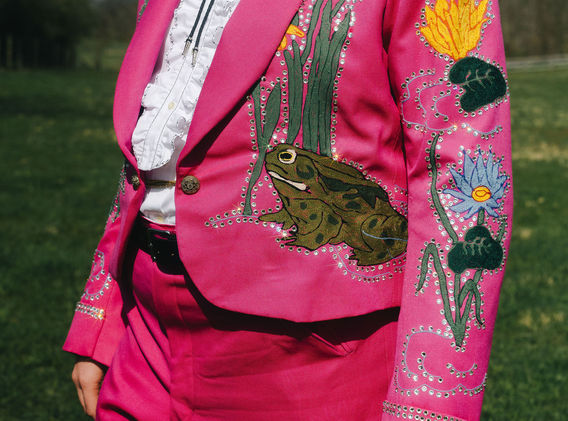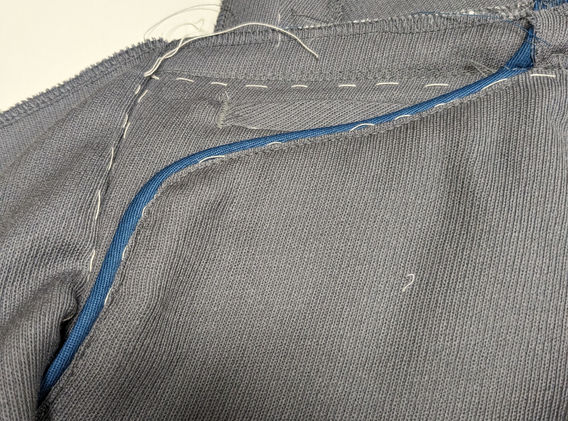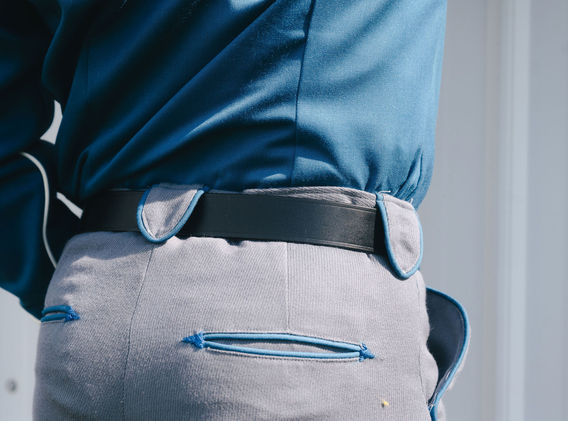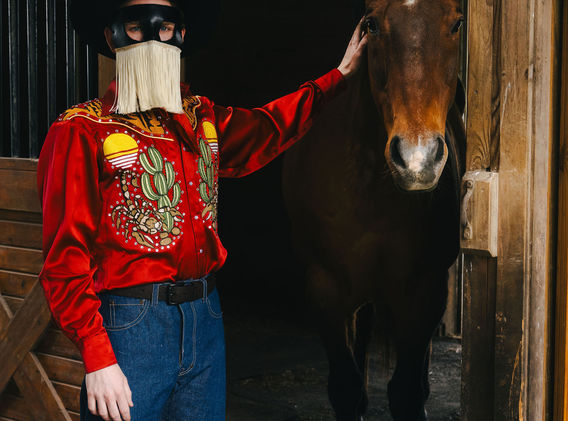From the Yee to the Haw: The Evolution of Western Wear from Function to Fabulous
My thesis "From the Yee to the Haw: The Evolution of Western Wear from function to Fabulous" explore the history of western wear through the lenses of three country music icons. From the beginnings of the western star with Gene Autry, to the glam of Hank Snow, and ending with the modern interpretation of western wear with Orville Peck, those icons act at moments in history for my thesis.
I also wanted to explorer the importance of surface decoration and masculinity and what it means in the western wear world. I also want to research into what was happening in the world of country music and how did it reflet in the clothing of the stars. And with the surface decoration comes what it represents. I dove deep into the idea and question about what does masculinity look like and mean when it is represented by the country western stars.
All final photos are taken by Cara Pentoney, @georgemichaelslovechild
Look #1- Gene Autry
When I narrowed my focus to country musicians and what they wore, I knew that I had to start with Gene Autry. Before him, country musicians wore their nice clothes, their Sunday best, when preforming. For me, I see the shift in clothing in country music to more of a costume then Gene Autry began making films in the 1930s. It was a progression from a man who sings well to Gene Autry, the Singin' Cowboy. He became a character both in his music and his film career. And, thus, his clothing began to reflect more of the character he was creating.
I was really inspired by the sort of uniform that Gene Autry crated for himself through his clothing. He almost always wore a button up shirt and a trousers with some piping on it. From there I found the blue butterfly shirt that just totally stood out to me and I fell in love with it, It is a very typical western shirt but with butterflies as the surface detail. I knew that this was the one that I was going to crate. For the trouser, it was a little harder. In the research with the butterfly shirt, I saw that he wore a few different pants with it, from a pair of jeans to trousers. After discussing with my mentor, we came to the decision to strike out on our own and make a pair of grey trousers, piped with the blue fabric from the shirt. I followed the extent trousers from How The West was Worn and made them inspired by those.
Look #3- Orville Peck
Rounding out the final look in my thesis is the photos from Orville peck's Bronco album publicity photos. After exploring two different icons of country music, I knew that I had to finish with the musician that started me down the path of western wear. I felt that this specific outfit worn by Orville Peck brought together both of the pervious looks perfectly. The traditional western wear from Gene Autry and the sparkle from Hank Snow come together to make a more modern take on classic western wear.
I was very inspired by Orville Peck's promotional photos for his Bronco album. He really embodied the idea of the rodeo star and what that means right here and now. The red shirt with the pearl snaps with chainstitch embroidery is such a call back to more of the past. It is the classic component of the look. The jeans push the look into the 2020s. I chose to recrate the classic Levi's 501s for the look. Capping off the look with chaps and the iconic mask with fringe, brings everything together.
This look allowed me to do a lot of things for the first time. I had never worked with leather before, let alone pattern and make chaps and a mask. I had also never made jeans before. It was very exciting to be able to work with all these new materials and new techniques. I felt very successful in what I was able to accomplish. It was not without some bumps though. I was originally working with a digital embroider when my mentor and I thought that the shirt might have been embroidered in that way. We talked for a while and made a plan. But then, she was not able to do it. It was a punch in the gut to get that phone call. However, there was no time to sulk. Laura Robinson, my mentor, reached out to Bob Trump, from the St. Louis Rep, and asked him to help. He was able to embroider the shirt and I got to experience sending out a garment for work like that.
Look #2- Hank Snow
When I first began working researching western wear, I was drawn to Nudie Cohn and his famous Nudie Suits. In my mind there was no way to do a western wear themed thesis without recreating one. I chose to do one of the fist Nudie Suits that Hank Snow would own because of its composition. The short suit jacket with the big bold bullfrogs, the vibrant color, and the sheer amount of rhinestones made it incredibly appealing to me to make. My personal love a frogs played a small part as well.
I began with calculating the proportions of the suit based on the few photos that exist of this suit. My fit model, Michael Ciaramitaro, is 6'4" and I wanted to make sure that the proportions of the suit fit his build. I then mocked up the jacket and pants.
From there, I began working on cutting the suit out and jumping straight into the chain stitch embroidery. I took the photos of the suit from "How the West was Worn" and traced over them in Adobe Illustrator and then scaled up the images to fit Michael's proportions. I then pounced around the lines of the pattern. Once I had the pattern in place, I used chalk dust to transfer the pattern on to the pieces of fabric. From there I was able to chain stitch the design. I found it a lot like a paint with numbers kit.
Once the chain stitch embroidery was done, I out the jackets and pants together. The final touch on the outfit was to outline all the embroidery with rhinestones. I felt that the rhinestones really make a Nudie Suit look like a Nudie Suit.















































